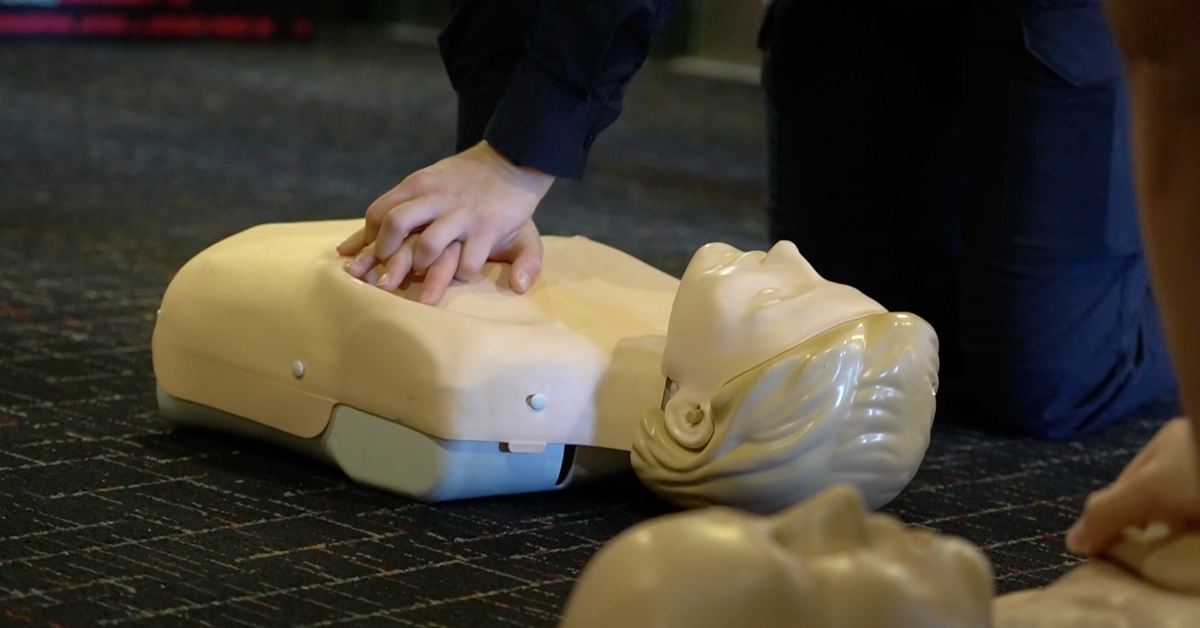Saving Lives: The Critical Role of Bystander CPR
Hands-only CPR training available at UC San Diego, Feb. 26 at 10:30 a.m.
Story by:
Published Date
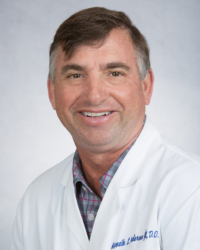
Ken Anderson, D.O., a San Diego area sports medicine physician, was playing tennis with his wife and friends on a hot August day. In the middle of his third set, he suddenly collapsed on the court. Without any prior heart disease history, and with no signs or symptoms, Anderson’s heart stopped.
Thankfully, his friend immediately began performing cardiopulmonary resuscitation (CPR) chest compressions while another friend retrieved and applied an automated external defibrillator (AED), shocking his heart back into rhythm.
Because of the rapid response of bystander intervention, Anderson was safely transported to the hospital and was effectively treated for blockage in his left anterior descending artery.
“After I realized what happened, I realized how lucky and fortunate I was that my friends were there with an AED present,” said Anderson. “Even if you haven’t received CPR training, it’s better to act than to not act, but the training certainly prepares you for what you are going to experience.”
As a sports medicine physician, Anderson had prior experience with performing CPR. Being the recipient of CPR made Anderson grateful to have experience performing CPR and made him a stronger proponent of receiving CPR training.
“I have resuscitated several people in the past. I know how beneficial AEDs and CPR are,” he said. “It makes a significant difference if there’s someone who is willing to step in and do what’s needed at the time. It makes it easier to do that if they do have some familiarity with CPR training.”
Right place, right time
According to the American Heart Association, “about 90 percent of people who suffer out-of-hospital cardiac arrests die. CPR, especially if performed immediately, can double or triple a cardiac arrest victim’s chance of survival.”
Skylar Lane, public health graduate ‘17, was a UC San Diego student worker during her internship at the County of San Diego Aging and Independent Services. While waiting for a series of meetings to start, a county library employee fell to the ground in full cardiac arrest.
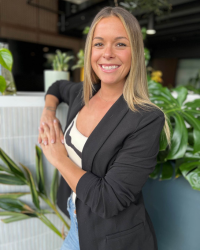
Lane immediately assessed the situation and jumped into action, alerting onlookers to call 911, requesting an AED and performing bystander hands-only CPR. Lane said she was performing chest compressions for 17 minutes before emergency medical services took over and transported the county employee to the hospital where, thankfully, he fully recovered.
"Prior to saving this man's life, I was certified in AED and CPR training," she said. "Learning CPR and AED training was very important. I know if I didn't have prior training, I wouldn't have been able to react in the situation, let alone save his life."
After the incident, Lane coordinated a CPR and AED certification course to become recertified and certify her colleagues for the first time.
Every second counts
Bystander CPR occurs anytime CPR is initially performed by a non-medical rescuer, such as a relative or co-worker. Critical for survival, bystander CPR initiation delays of even a few minutes while awaiting advanced resuscitation from emergency responders significantly reduces a person’s chance for survival.
For every minute without CPR, survival from cardiac arrest decreases by 7 to 10 percent. When bystander CPR is provided, the decrease in survival is 3 to 4 percent per minute, according to the National Institutes of Health.
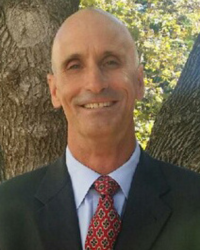
Dismas Abelman, a retired battalion chief from the Solana Beach Fire Department, is the emergency and mission continuity manager at UC San Diego. Abelman has worked within emergency services for more than 30 years and has performed lifesaving CPR to people in the field. Abelman emphasized that having trained people act in the minutes it takes for first responders to arrive can save lives.
“The amount of time it takes to call 911 and have dispatchers deploy the fire department and the ambulance, can be anywhere from three minutes onward, and that’s pretty good in San Diego traffic,” said Abelman.
It is increasingly important to step in when the need arises, which helps when bystanders are trained to do so, said Abelman.
Hands-only CPR
Hands-only CPR involves chest compressions at a push rate of 100 to 120 compressions per minute into the patient’s central chest area, along the nipple line. Hands-only CPR is a game-changer.
“People find hands-only CPR much more accessible because it eliminates the worry of having to do mouth-to-mouth or having a mask,” said Abelman. “It’s also much easier to teach and doesn’t require the four-hour certification process that past training required.”
He said that providing CPR is a very emotional, but worthwhile experience.
“I can’t begin to describe how amazing it feels knowing you have had a positive impact on someone’s life in a time of need. Helping someone in that time is very gratifying,” said Abelman.
The UC San Diego Environment, Health and Safety department provides 10 to 12 training sessions a year, including training through The Great Shakeout, an event in collaboration with the UC San Diego Police Department, Project Heart Beat and the County of San Diego.
Mark Greenberg, M.D., a pediatric anesthesiologist at UC San Diego Health and professor of anesthesiology and pediatrics at UC San Diego School of Medicine, and his research team members have created the free Rescue Me CPR! app — a potentially lifesaving tool that provides step-by-step prompts to perfrom CPR.
The American Red Cross has information about hands-only CPR including tips on learning and insights on how to save a life.
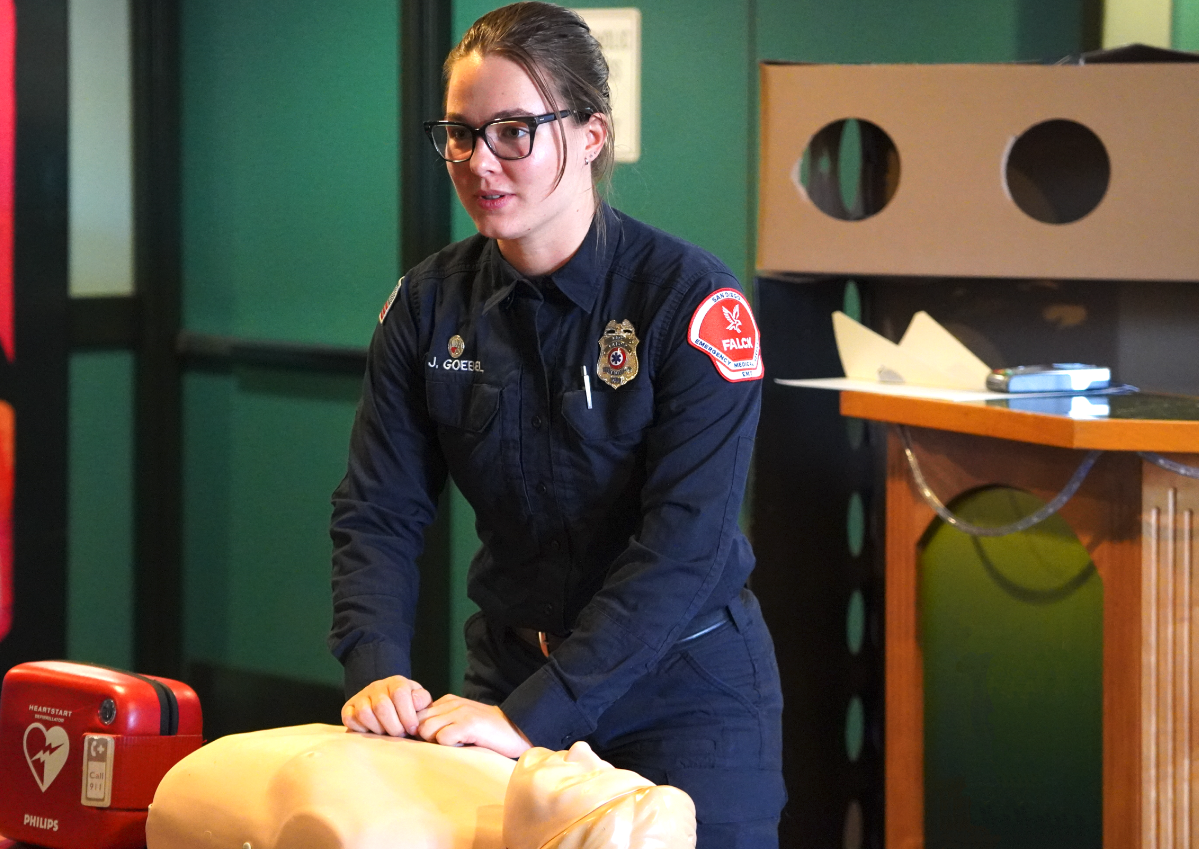
Additional CPR resources are available through the City of San Diego and County of San Diego project, PulsePoint, a mobile app that alerts CPR-trained bystanders if someone nearby is having a sudden cardiac arrest that may require CPR; and the nationally recognized AED-centric program, Project Heart Beat.
A hands-only CPR training will be held for the UC San Diego community at 10:30 a.m. on Feb. 26 at the Academic Lawn between the Pharmaceutical Sciences Building and Israni Biomedical Research Facility. This training will be provided by Project Heart Beat and UC San Diego Environment, Health and Safety, and is open to faculty, staff, students and academics. Students can register online for school credit. In case of inclement weather, please visit the Revive and Survive San Diego website for an updated location information.
Share This:
Stay in the Know
Keep up with all the latest from UC San Diego. Subscribe to the newsletter today.
